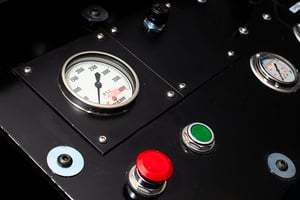 Countless industries use hydraulic machinery in different settings. Automotive repair, the construction industry, the entertainment business, aerospace companies, and municipalities rely on hydraulics to keep their businesses running daily. But what happens when these hydraulics malfunction? Read on to learn how to identify and troubleshoot hydraulic malfunctions in your industrial machinery.
Countless industries use hydraulic machinery in different settings. Automotive repair, the construction industry, the entertainment business, aerospace companies, and municipalities rely on hydraulics to keep their businesses running daily. But what happens when these hydraulics malfunction? Read on to learn how to identify and troubleshoot hydraulic malfunctions in your industrial machinery.
Audit All Hydraulic Machinery
Keeping your hydraulic machinery functioning means regularly auditing it. You want to make sure you identify any signs of trouble before problems become serious. Some new machinery has the ability to alert you through a maintenance system when there is a problem and the machine needs service. But of course, simply checking the machine on a regular maintenance schedule will ensure that the machinery is working properly.
Ways to Identify Malfunctions in Hydraulic Machinery
Train employees to recognize the early signs of hydraulic malfunction. Finding and identifying problems early can help ensure there’s enough time to fix the problem--before it becomes a serious issue. Here are some examples of things to watch out for:
- Unusual sounds: Most hydraulic machinery works quietly. Something is going wrong if you hear noises and rattles from your hydraulics.
- Exterior or interior leaks: External hydraulic leaks are easy to spot; if your machinery leaks on the outside, you need to figure out what’s wrong immediately. Internal leaks can be harder to spot: watch for poor performance or sudden pressure drops.
- Too hot: Any machinery will heat up when used, but if hydraulic machinery gets too hot, it will stop working as effectively.
- Irregular movement: Sometimes hydraulics will continue to function, but their speed becomes inconsistent or irregular.
- Clouded oil: If the fluid inside your hydraulic machinery becomes milky instead of clear, it has been contaminated and will prevent your machinery from operating correctly.
 Troubleshooting Techniques for Industrial Hydraulics
Troubleshooting Techniques for Industrial Hydraulics
Before you call in industrial machinery repair experts, there are a few troubleshooting techniques you can try on your own:
Check Hydraulic Fluids and Filters
First, check fluids and filters. Ensure your reservoir fluids are at the right level and no hoses are clogged.
Check for Overheated Machinery
Next, you can use an infrared thermometer to find the part of the machine generating the most heat. Since overheating fluids can cause problems, this can give you an idea of where to look for trouble.
Review Schematics for Hydraulic Machines
Review your schematics to understand how fluids create pressure and flow through the machinery; this can help you pinpoint the problem.
If none of these issues solves the problem, it may be time to call in professional maintenance to prevent further damage to your machinery.
Click to learn more about Radwell's hydraulics repair capabilities.
To learn more about parts and services, visit Radwell.com
